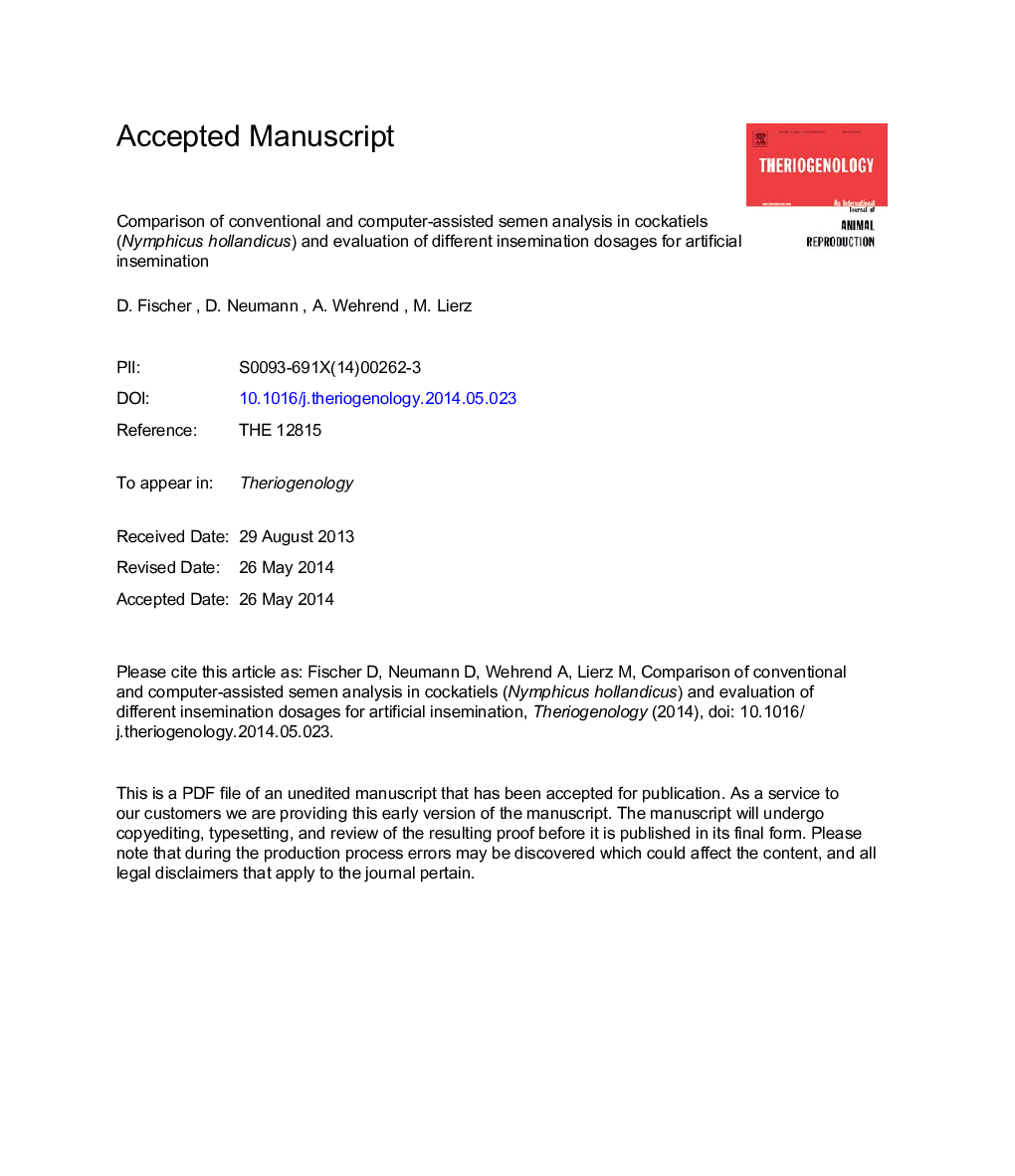| کد مقاله | کد نشریه | سال انتشار | مقاله انگلیسی | نسخه تمام متن |
|---|---|---|---|---|
| 10893149 | 1082180 | 2014 | 28 صفحه PDF | دانلود رایگان |
عنوان انگلیسی مقاله ISI
Comparison of conventional and computer-assisted semen analysis in cockatiels (Nymphicus hollandicus) and evaluation of different insemination dosages for artificial insemination
دانلود مقاله + سفارش ترجمه
دانلود مقاله ISI انگلیسی
رایگان برای ایرانیان
کلمات کلیدی
موضوعات مرتبط
علوم زیستی و بیوفناوری
علوم کشاورزی و بیولوژیک
علوم دامی و جانورشناسی
پیش نمایش صفحه اول مقاله

چکیده انگلیسی
Many psittacine species are threatened in the wild and also rare in captivity. Therefore, successful conservation and breeding programs are important to save these species. Unfortunately, clutches in conservation programs are frequently infertile. Semen evaluation is beneficial to investigate the causes of infertility and is advisable before artificial insemination (AI). In this study, we analyzed the semen of cockatiels (Nymphicus hollandicus) using two different methods and investigated different insemination dosages for AI. Cockatiels (n = 30) were divided into two groups (group A: nine males; group B: six males). The males in group B were endoscopically sterilized, whereas the males in group A were used as semen donors. In the first part of the study, the semen of males in group A was evaluated by semen analysis. Semen samples were collected by the massage technique and examined using a conventional light microscope and a computer-assisted semen analyzer for comparison. Results demonstrated that the evaluations of motility, progressive motility, and sperm concentration, but not of live/dead ratio, correlated strongly for both methods. However, the results for sperm concentration, progressive motility, and live/dead ratio differed significantly. In the second part of our study, the volume and quantity of spermatozoa of the semen samples were adjusted and used for AI of females of group B. Intravaginal insemination with 250,000 spermatozoa resulted in five of 17 (29%) eggs fertilized; however, intracloacal insemination resulted in only four of 57 (7%) eggs fertilized at 232,000 and 250,000 spermatozoa but none at higher or lower dosages.
ناشر
Database: Elsevier - ScienceDirect (ساینس دایرکت)
Journal: Theriogenology - Volume 82, Issue 4, 1 September 2014, Pages 613-620
Journal: Theriogenology - Volume 82, Issue 4, 1 September 2014, Pages 613-620
نویسندگان
D. Fischer, D. Neumann, A. Wehrend, M. Lierz,